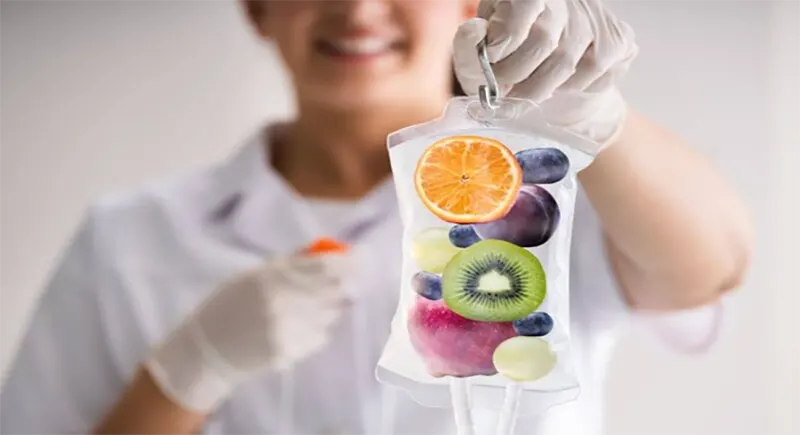3 Ways to Cope With Menopause
Menopause marks a significant transition in a woman’s life, signaling the end of her reproductive years. It brings with it many physical and emotional changes that can be challenging and overwhelming to deal with. However, with the right strategies and Menopause Treatment, you can navigate this phase more smoothly and maintain a good quality of life. Here are three ways to cope with menopause effectively.
1. Embrace a Healthy Lifestyle
Adopting a healthy lifestyle is crucial in managing the symptoms of menopause. You need to make conscious choices about your diet, physical activity, and overall health practices. Eating a balanced diet rich in fruits, vegetables, lean proteins, and whole grains can impact your well-being.
Certain foods can help alleviate menopausal symptoms. For instance, incorporating phytoestrogen-rich foods like soy, flaxseeds, and legumes can mimic estrogen in your body, reducing hot flashes. Calcium and vitamin D are essential to combat the … Read more
Revitalize Your Wellness: Discover Miami’s Top Beauty and Performance IV Drip Treatments
Miami, a bustling metropolis known for its vibrant culture, stunning beaches, and cutting-edge fashion, has also emerged as a hotspot for the latest trends in aesthetic treatments. Among these, performance IV drips and beauty drips have garnered significant attention, revolutionizing the way locals and visitors rejuvenate and maintain their allure. This city, synonymous with luxury and innovation, offers a range of bespoke wellness and beauty therapies that cater to a discerning clientele looking to enhance their physical and mental well-being.
The Rise of IV Drip Therapies in Miami
IV drip therapies, once primarily used in hospitals for hydration and nutrient administration, have taken a glamorous turn in Miami, morphing into a sought-after wellness regimen for hydration, vitality, and aesthetic benefits. The concept of using IV drips to enhance overall health and appearance has captivated the Miami wellness scene, thanks in part to its instant efficacy and the ability to tailor … Read more
The Real Reason Dentists Wear Masks During Appointments
Have you ever wondered why your dentist wears a mask during appointments? It’s not just to hide a secret identity or to keep their perfect smile under wraps! Dentists wear masks for several important reasons that go beyond maintaining their mysterious allure.
That’s because masks are vital for protecting both the dentist and their patients from airborne bacteria and viruses, especially during procedures that can generate sprays or splatters. They also help block any unpleasant odours and ensure that the focus remains on your oral health, not on what you or the dentist had for lunch! This small piece of protective gear plays a significant role in dental safety and hygiene.
Behind the Dentist’s Mask
You might notice that from the moment you sit in the chair, your Huntingdale dentist is already wearing a mask. It’s not to prevent you from critiquing their own dental work, though you’d likely find … Read more
Mayfair Magnificence: The Epitome of Elegance in London’s Engagement Rings
London’s Mayfair district has long been synonymous with elegance, luxury, and timeless beauty. Amidst its cobblestone streets and historic architecture lies a treasure trove of exquisite jewelry boutiques, each offering a glimpse into the world of opulence and sophistication. Among the array of treasures that Mayfair boasts, none shine quite as brightly as its collection of engagement rings. For those seeking the epitome of elegance in their search for the perfect symbol of love, Mayfair stands as a beacon of magnificence. Let us delve into the allure of Mayfair’s engagement rings, where every ring tells a story of romance, refinement, and enduring commitment.
Engagement rings London are more than just pieces of jewelry; they are symbols of profound emotion and devotion. Nestled within Mayfair’s prestigious streets are renowned jewelers whose craftsmanship transcends time. Each engagement ring crafted in Mayfair is a testament to the skill and artistry of its makers, … Read more
Personalized Meal Planning for Long-Term Weight Maintenance Success
When it comes to achieving long-term weight loss success, personalized meal planning is key. While most fad diets focus on short-term, rapid weight loss, they fail to address the key component of sustained weight maintenance. By creating a personalized, sustainable meal plan, you can develop healthy eating habits that will help you maintain your weight loss goals over the long term. Here’s what you need to know.
Why Personalized Meal Planning Matters
No two individuals are the same, and their dietary needs and preferences also differ. A personalized meal plan takes into account your unique nutritional needs, such as your calorie requirements, dietary restrictions, and personal tastes. Through meal planning, you can ensure that you’re eating well-balanced meals that provide all the nutrients your body needs while also meeting your weight loss goals. This approach also eliminates the need for guesswork and reduces the likelihood of making impulsive or unhealthy … Read more












